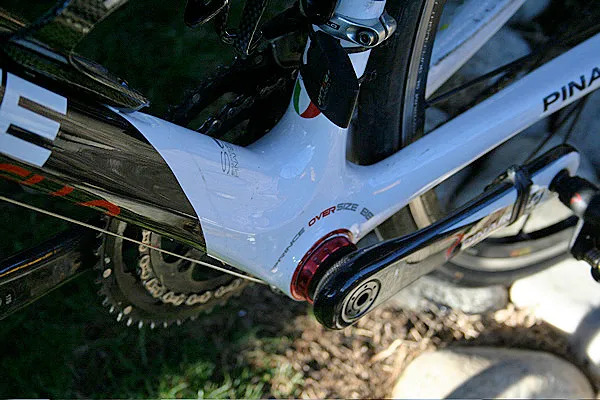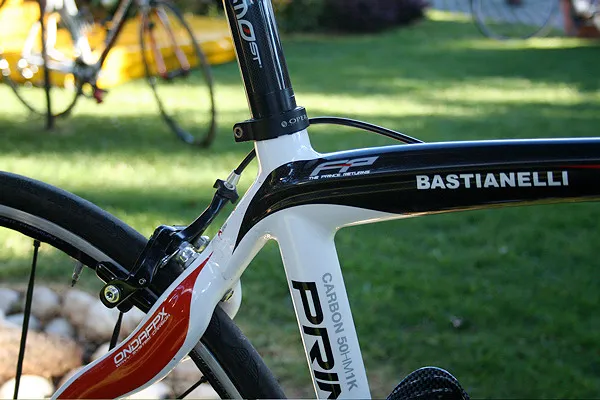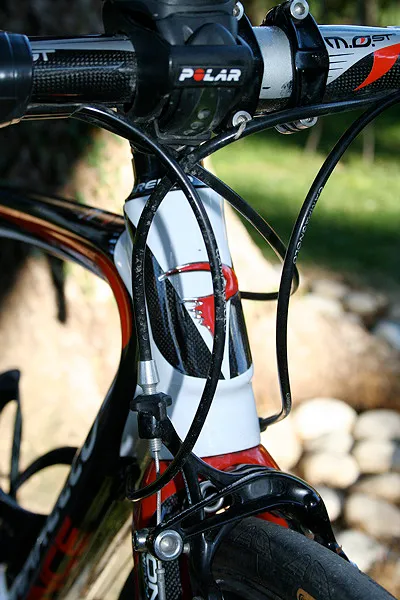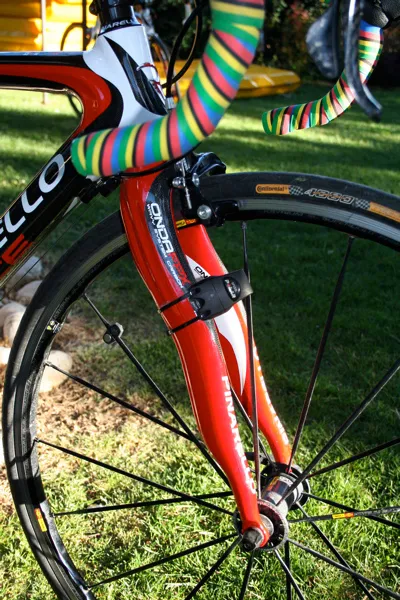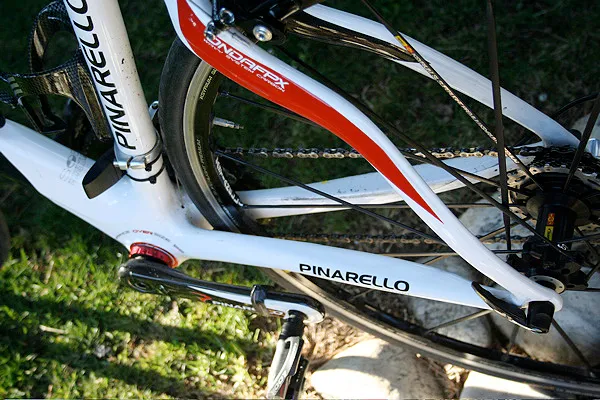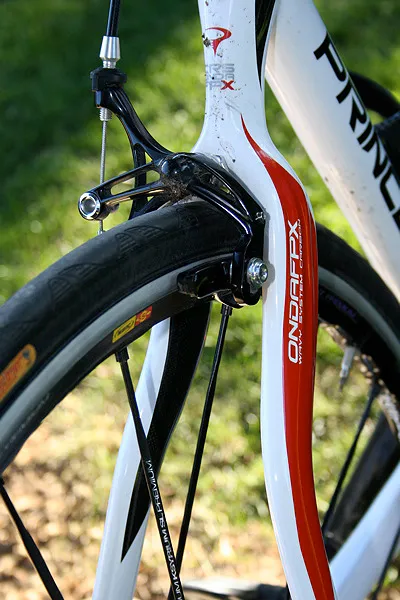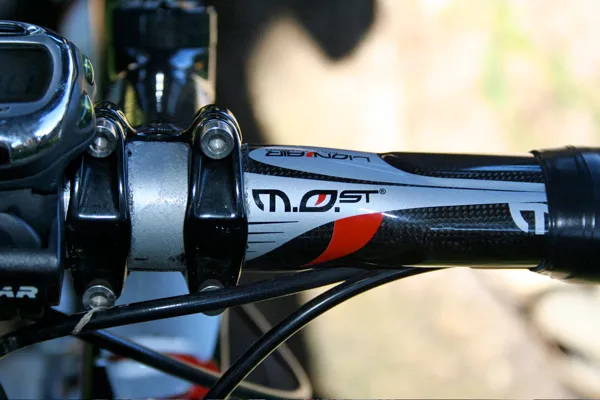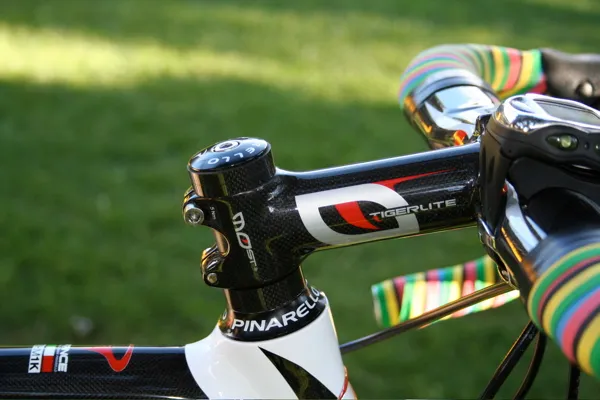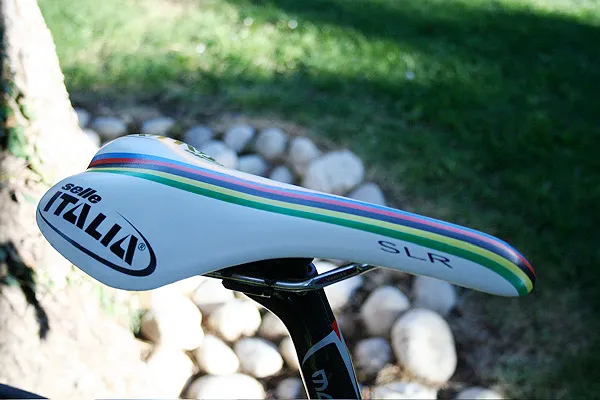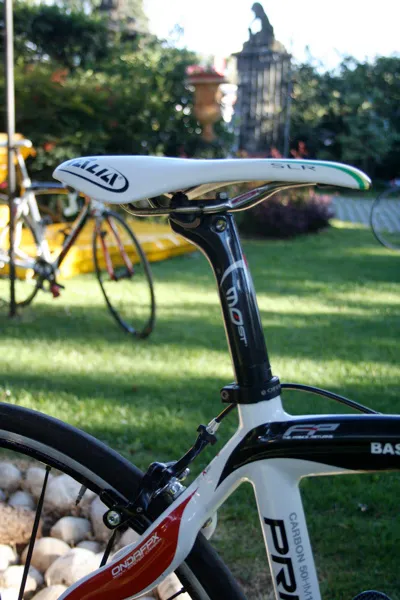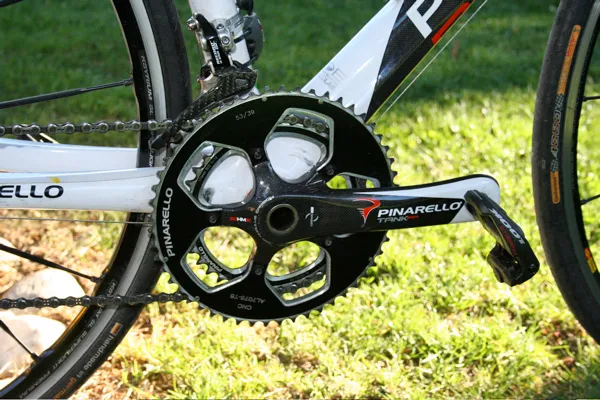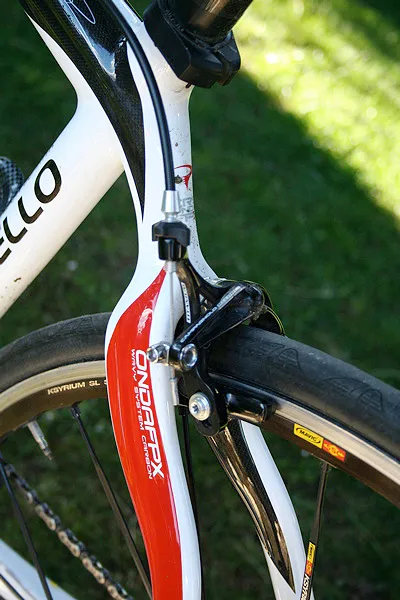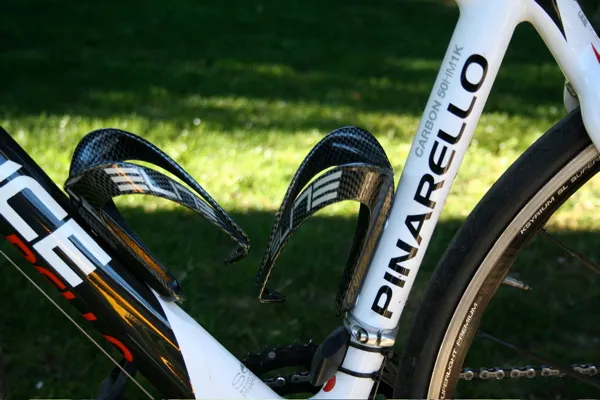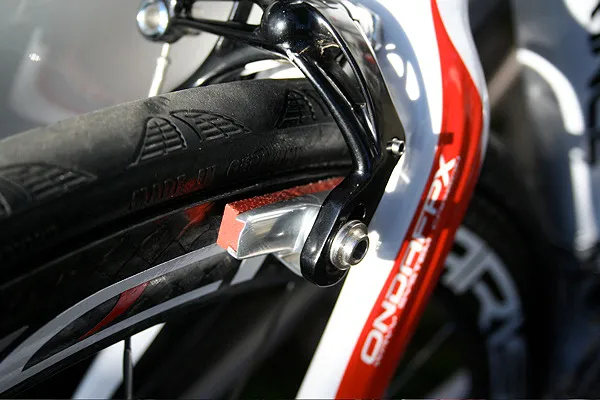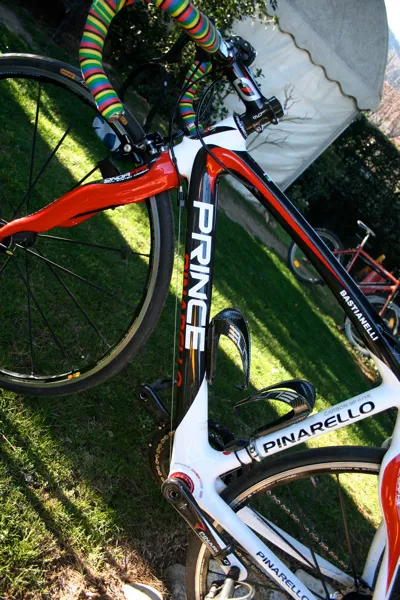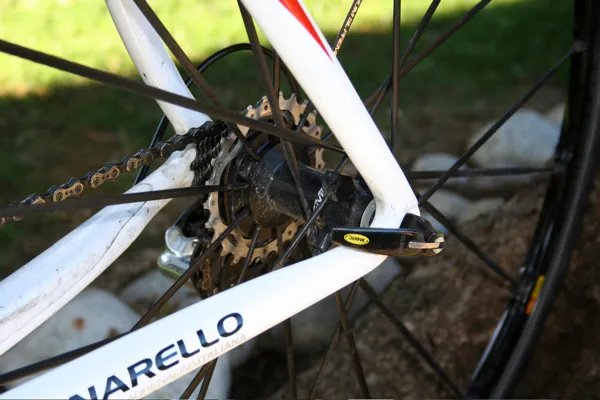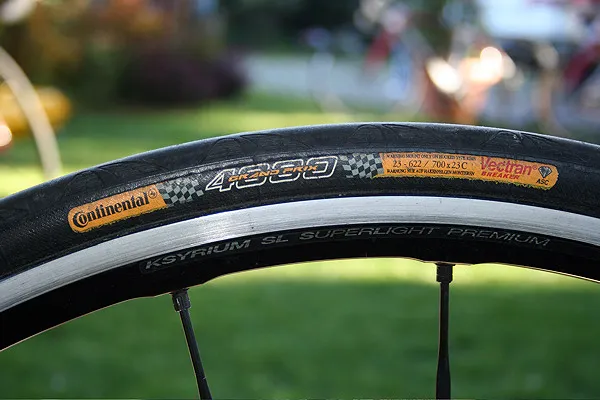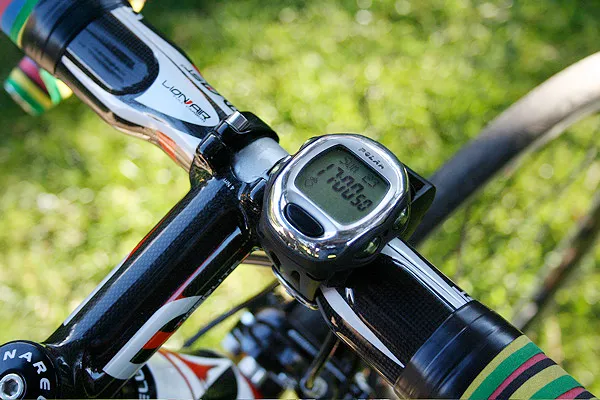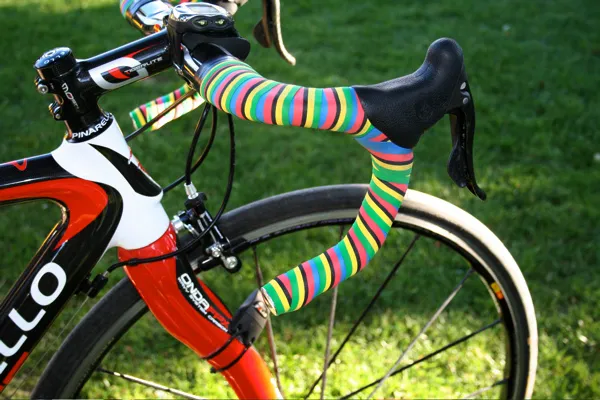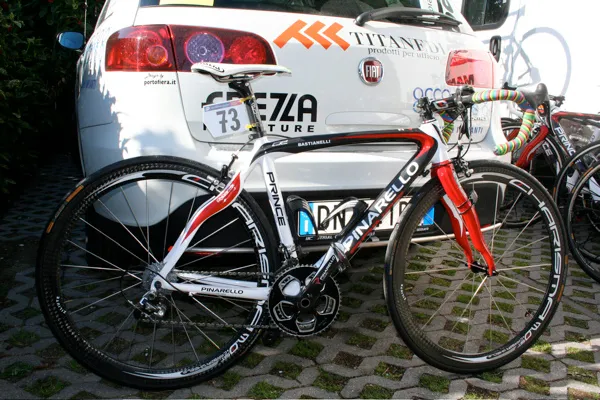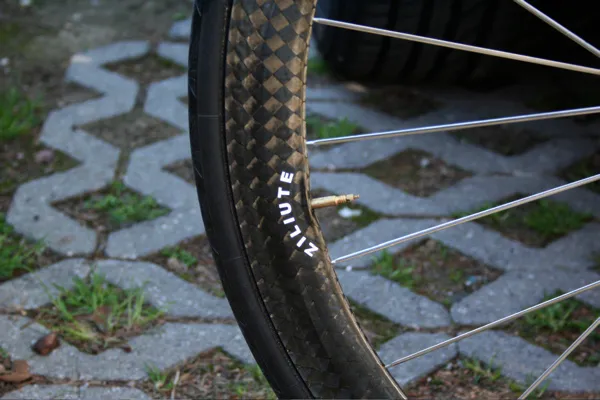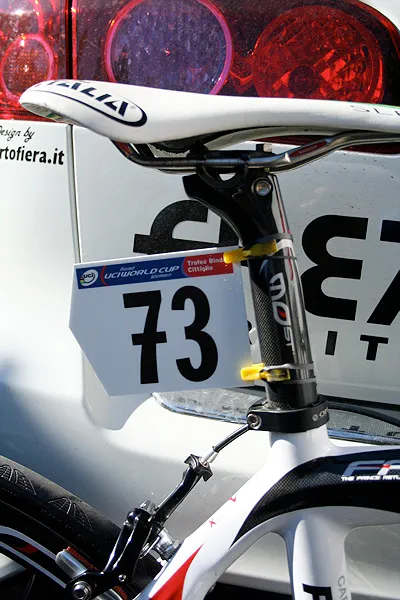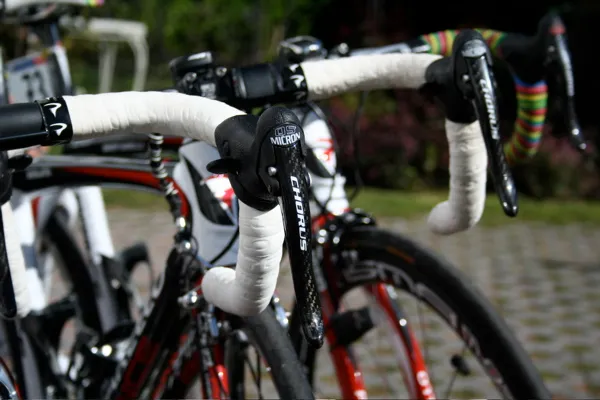Having recently featured the bike of men’s world champion Paolo Bettini, it seems only proper that we should also take a closer look at the steed of his female counterpart, Italian compatriot Marta Bastianelli. To this end, we managed to coax it – and briefly her – to one side before the recent Trofeo Alfredo Binda, in the northern Italian town of Cittiglio.
Bastianelli won her rainbow jersey in slightly unexpected fashion in Stuttgart last year. The 20 year-old rider was sent up the road to force riders of other nations – particularly those of Dutch defending champion Marianne Vos – to chase to the benefit of Italian team captain Giorgia Bronzini. However, no concerted chase ever developed and Bastianelli was able to win alone. Vos won the sprint for silver, and Bronzini – appropriately – took the bronze.
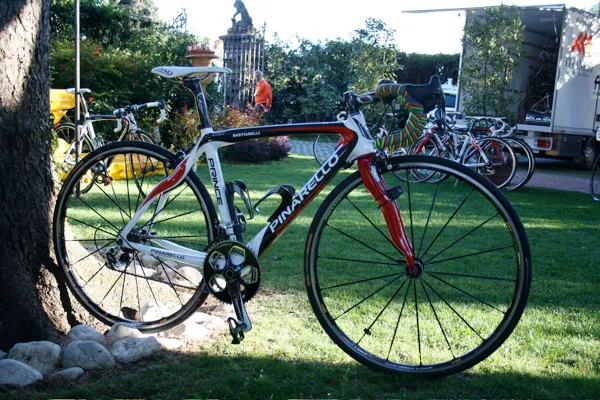
From a visual perspective, Bastianelli’s bike stands in stark contrast to that of Bettini. Whereas the Quick.Step rider’s steed is resplendent in custom rainbow and gold livery from stem to stern to celebrate his world and Olympic titles, Bastianelli’s bike is essentially standard team issue white-and-red with only a rainbow-striped Selle Italia SLR saddle and some appropriately coloured bar tape to celebrate the achievement. While this could be taken as a sign of the champion’s modesty, it is far more likely an indicator of the unfortunate gulf in budgets between the men’s and women’s sides of the sport.
Even so, Bastianelli competes aboard no second-tier ride. We recently reviewed – and raved about – the new Pinarello Prince and found its exclusive use of Torayca’s 50HM1K carbon to yield a particularly light and responsive frame. The unmistakeable Onda FPX curves in the fork blades and chain stays also manage to provide a smooth ride and are designed to take the sting out of uneven road surfaces without compromising lateral stiffness. Front end rigidity is further enhanced by the tapered steerer tube, which flares from a standard 1 1/8” at the stem clamp to 1 1/4” at the crown.
Not one of the tallest members of the women’s peloton, Bastianelli uses the smallest size frame available: a 44cm with a sloping top tube. While it’s possible that – like Bettini and many others – she has selected a slightly smaller size than usual to decrease weight and increase rigidity, Pinarello’s decision not to produce the Prince in a women’s-specific geometry probably has more to do with it. In general, women tend to have longer legs and shorter torsos than men of similar height and dropping the frame size is Bastianelli’s only real option to get a proper top tube length.

Bastianelli’s mount features an almost identical specification to the Prince we tested; the major difference – apart from size– is the choice of wheels used by the Safi-Pasta Zara-Manhattan team. For the training spin and course reconnaissance ride the day before the race, Bastianelli used the same wheels as the rest of her team: the Mavic Ksyrium SL, shod with 23mm-wide Continental Grand Prix 4000 clinchers. As one of the big favourites for victory at Trofeo Alfreda Binda, though, she switched to a more aerodynamic pair of Pinarello’s house brand Charisma deep section carbon wheels. However, a not-too-close inspection of these revealed that they were borrowed from Lithuanian team-mate Diana Ziliute.
The majority of the finishing kit is also from Pinarello’s in-house MOst brand. A pair of 40cm-wide Lion Air bars is clamped to a Tiger Lite stem, and the SLR saddle is held in place by a carbon Tail seatpost. Two 5mm-tall carbon spacers sit above the stem clamp, suggesting that Bastianelli has lowered her position since taking possession of the bike or, more likely, that the team mechanics have taken the safety first approach and deliberately clamped the steerer below the top for increased safety, more positioning flexibility and a slightly more solid purchase on the tube.

Bastianelli’s gruppo is an almost entirely Campagnolo affair, the sole exception being a MOst TANK FP chainset fitted with a standard sized pair of 53/39T chainrings. Like most of the men’s peloton, she uses the new “Red” version of Campagnolo’s Record Ergopower levers and the hilliness of the course was taken into account with the selection of a 12-25T cassette. Brakes are a pair of standard Record D-Skeleton calipers equipped with some carbon-specific pads to work on those borrowed Charisma wheels on race day. Like the rest of her team-mates, Bastianelli uses Pinarello-branded Look KeO Carbon pedals.
Interestingly enough, at 7.42kg (16.36lb) Bastianelli’s bike weighs over 400g (0.88lb) more than the significantly larger bike we tested, even in race day configuration with the Charisma wheels. In fact, some of this weight difference can probably be attributed to those wheels, seeing as how Bastianelli used the clincher version which is substantially heavier than the tubular option. The rest of it can be explained by the fact that some of the finishing kit is less than top of the range. For instance, the rainbow-striped SLR saddle, far from being a specially made version just for her, is in fact a limited edition run of Selle Italia’s base level version that accounts for a full 55g more than the lightest one with carbon rails.
Even so, Bastianelli may still consider herself lucky. While she and other team captains like Ziliute and Bronzini (who ride for sister team Titanedi-Frezza Acca Due O) have Record-equipped bikes, the realities of the budgetary gap between men’s and women’s racing means that many of their team-mates have to “make do” with second-tier Chorus.

